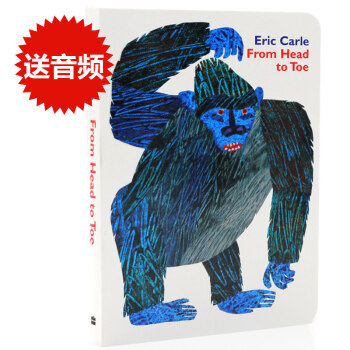![The Awakening 觉醒 英文原版 [平装]](https://pic.tinynews.org/19017062/dcab0fc2-a9f6-4c32-af93-0a62271bd2db.jpg)

具体描述
内容简介
First published in 1899, this beautiful, brief novel so disturbed critics and the public that it was banished for decades afterward. Now widely read and admired, The Awakening has been hailed as an early vision of woman's emancipation. This sensuous book tells of a woman's abandonment of her family, her seduction, and her awakening to desires and passions that threated to consumer her. Originally entitled "A Solitary Soul," this portrait of twenty-eight-year-old Edna Pontellier is a landmark in American fiction, rooted firmly in the romantic tradition of Herman Melville and Emily Dickinson. Here, a woman in search of self-discovery turns away from convention and society, and toward the primal, from convention and society, and toward the primal, irresistibly attracted to nature and the sensesThe Awakening, Kate Chopin's last novel, has been praised by Edmund Wilson as "beautifully written." And Willa Cather described its style as "exquisite," "sensitive," and "iridescent." This edition of The Awakening also includes a selection of short stories by Kate Chopin."This seems to me a higher order of feminism than repeating the story of woman as victim... Kate Chopin gives her female protagonist the central role, normally reserved for Man, in a meditation on identity and culture, consciousness and art."
作者简介
Kate Chopin (1850–1904) was born in St. Louis. She moved to Louisiana where she wrote two novels and numerous stories. Because The Awakening was widely condemned, publication of Chopin’s third story collection was cancelled. The Awakening was rediscovered by scholars in the 1960s and 1970s and is her best-known work.精彩书摘
Chapter 1A green and yellow parrot, which hung in a cage outside the door, kept repeating over and over:
"Allez vous-en! Allez vous-en! Sapristi! That's all right!"
He could speak a little Spanish, and also a language which nobody understood, unless it was the mockingbird that hung on the other side of the door, whistling his fluty notes out upon the breeze with maddening persistence.
Mr. Pontellier, unable to read his newspaper with any degree of comfort, arose with an expression and an exclamation of disgust. He walked down the gallery and across the narrow "bridges" which connected the Lebrun cottages one with the other. He had been seated before the door of the main house. The parrot and the mockingbird were the property of Madame Lebrun, and they had the right to make all the noise they wished. Mr. Pontellier had the privilege of quitting their society when they ceased to be entertaining.
He stopped before the door of his own cottage, which was the fourth one from the main building and next to the last. Seating himself in a wicker rocker which was there, he once more applied himself to the task of reading the newspaper. The day was Sunday, the paper was a day old. The Sunday papers had not yet reached Grand Isle. He was already acquainted with the market reports, and he glanced restlessly over the editorials and bits of news which he had not had time to read before quitting New Orleans the day before.
Mr. Pontellier wore eye-glasses. He was a man of forty, of medium height and rather slender build; he stooped a little. His hair was brown and straight, parted on one side. His beard was neatly and closely trimmed.
Once in a while he withdrew his glance from the newspaper and looked about him. There was more noise than ever over at the house. The main building was called "the house," to distinguish it from the cottages. The chattering and whistling birds were still at it. Two young girls, the Farival twins, were playing a duet from "Zanipa" upon the piano. Madame Lebrun was bustling in and out, giving orders in a high key to a yard-boy whenever she got inside the house, and directions in an equally high voice to a dining-room servant whenever she got outside. She was a fresh, pretty woman, clad always in white with elbow sleeves. Her starched skirts crinkled as she came and went. Farther down, before one of the cottages, a lady in black was walking demurely up and down, telling her beads. A good many persons of the pension had gone over to the Chênière Caminada in Beaudelet's lugger to hear mass. Some young people were out under the water-oaks playing croquet. Mr. Pontellier's two children were there -- sturdy little fellows of four and five. A quadroon nurse followed them about with a faraway, meditative air.
Mr. Pontellier finally fit a cigar and began to smoke, letting the paper drag idly from his hand. He fixed his gaze upon a white sunshade that was advancing at snail's pace from the beach. He could see it plainly between the gaunt trunks of the water-oaks and across the stretch of yellow camomile. The gulf looked far away, melting hazily into the blue of the horizon. The sunshade continued to approach slowly. Beneath its pink-lined shelter were his wife, Mrs. Pontellier, and young Robert Lebrun. When they reached the cottage, the two seated themselves with some appearance of fatigue upon the upper step of the porch, facing each other, each leaning against a supporting post.
"What folly! to bathe at such an hour in such heat!" exclaimed Mr. Pontellier. He himself had taken a plunge at daylight. That was why the morning seemed long to him.
"You are burnt beyond recognition," he added, looking at his wife as one looks at a valuable piece of personal property which has suffered some damage. She held up her hands, strong, shapely hands, and surveyed them critically, drawing up her lawn' sleeves above the wrists. Looking at them reminded her of her rings, which she had given to her husband before leaving for the beach. She silently reached out to him, and he, understanding, took the rings from his vest pocket and dropped them into her open palm. She slipped them upon her fingers; then clasping her knees, she looked across at Robert and began to laugh. The rings sparkled upon her fingers. He sent back an answering smile.
"What is it?" asked Pontellier, looking lazily and amused from one to the other. It was some utter nonsense; some adventure out there in the water, and they both tried to relate it at once. It did not seem half so amusing when told. They realized this, and so did Mr. Pontellier. He yawned and stretched himself. Then he got up, saying he had half a mind to go over to Klein's hotel and play a game of billiards.
"Come go along, Lebrun," he proposed to Robert. But Robert admitted quite frankly that he preferred to stay where he was and talk to Mrs. Pontellier.
"Well, send him about his business when he bores you, Edna," instructed her husband as he prepared to leave.
"Here, take the umbrella," she exclaimed, holding it out to him. He accepted the sunshade, and lifting it over his head descended the steps and walked away.
"Coming back to dinner?" his wife called after him. He halted a moment and shrugged his shoulders. He felt in his vest pocket; there was a ten-dollar bill there. He did not know; perhaps he would return for the early dinner and perhaps he would not. It all depended upon the company which he found over at Klein's and the size of "the game." He did not say this, but she understood it, and laughed, nodding good-by to him.
Both children wanted to follow their father when they saw him starting out. He kissed them and promised to bring them back bonbons and peanuts.
用户评价
《The Awakening》的装帧朴实无华,却透露出一种历久弥新的质感,书页的触感温润,仿佛承载了无数读者的阅读痕迹。我一直对那些能够直击人性深处,探讨个体在既定社会规则下如何寻找自由与认同的故事非常着迷,而《The Awakening》恰恰具备了这样的潜质。书名本身就如同一个号角,预示着一场关于自我发现与突破的旅程。我热切地渴望深入作者笔下的世界,去体验主人公内心深处的挣扎与渴望,去理解她是如何一步步摆脱束缚,最终找回真实的自我。在那个特定的时代背景下,女性的社会角色和个人意识之间存在的矛盾与张力,无疑是这部作品最引人入胜的部分。我期待它能呈现出一个立体而饱满的女性形象,她的苦痛、她的抗争,以及最终的“觉醒”,又会给予我们怎样的启发?这本书的字里行间,或许隐藏着超越时空的普适性真理,关于自由,关于选择,关于如何在一个不被理解的世界里坚持自我。我非常期待它带来的阅读体验,相信它会是一次深刻的心灵洗礼。
评分我被《The Awakening》的封面所吸引,它简洁的设计中蕴含着一种难以言喻的深邃,书页散发着淡淡的旧纸张香气,拿在手中就有一种沉甸甸的期待感。我一直对那些深入探讨个人成长与社会期待之间冲突的作品情有独钟,《The Awakening》这个名字就仿佛在低语着一个关于自我发现和挣脱束缚的故事。我迫不及待地想潜入作者精心构建的世界,去感受主人公内心的汹涌暗流,去体会她是如何一点点地打破陈规,发出属于自己的声音。我常常思考,在一个相对封闭的社会环境里,女性的自我意识是如何萌芽并最终形成一股力量的?这部作品能否为我们呈现出一个真实而有血有肉的女性形象?她的迷茫、她的抗争,以及最终的“觉醒”,会给我们带来哪些深刻的思考?我期待着它能够触动我内心最柔软的部分,让我对“觉醒”二字有更丰富的理解,不仅是关于个体,或许也关于时代和社会。这本书的篇幅适中,不会让人觉得负担过重,却足以承载一个引人入胜且发人深省的故事。
评分这部小说的封面设计就深深吸引了我,简约的风格中透着一种难以言喻的静谧,书页边缘泛着淡淡的旧时光气息,光是拿在手中,就能感受到它蕴藏的某种深刻的情感。我一直对探讨个人成长与社会束缚的作品情有独钟,而《The Awakening》这个书名本身就充满了力量,仿佛在预示着一场心灵的蜕变,一次对自我边界的挑战。我已经迫不及待地想沉浸在作者构建的世界里,去感受主人公内心的波澜起伏,去体会她是如何挣脱枷锁,寻找属于自己的声音。我常常在想,在那个特定的历史时期,女性的社会地位与自我意识之间存在着怎样的张力?这部作品能否为我们展现一个鲜活而真实的女性形象,她的痛苦、她的挣扎,以及最终的觉醒,又会带来怎样的启示?我期待着它能引发我更深层次的思考,让我对“觉醒”这个词有更深刻的理解,不仅仅是关于个人,或许也关于更广阔的社会层面。这本书的篇幅适中,不会让人感到过于沉重,但又足够承载一个完整而引人入胜的故事,我非常看好它带来的阅读体验,相信它会是一次触动灵魂的旅程。
评分这部《The Awakening》的封面设计,简洁而富有艺术感,传递出一种静谧而坚韧的力量,书页的泛黄色泽和略带粗粝的触感,都仿佛在诉说着一段跨越时光的故事。我一直对那些深入剖析个体在社会束缚下如何寻求内心自由的作品有着莫名的偏爱,《The Awakening》这个书名本身就如同一个信号,预示着一场关于自我解放和灵魂苏醒的探索。我急切地想要沉浸在作者所描绘的世界里,去体会主人公内心深处的矛盾与渴望,去感受她如何一步步挣脱无形的枷锁,找回属于自己的独立意志。我经常思考,在那个特定的历史背景下,女性的社会角色和内在觉醒之间会产生怎样的碰撞?这部作品是否能够为我们展现出一个立体而动人的女性形象?她的痛苦、她的挣扎,以及最终的“觉醒”过程,将会给我们带来怎样的启示?我期待它能激发我更深层次的思考,让我对“觉醒”这个概念有更全面的认识,不仅仅局限于个人,也许更能延伸到对整个社会发展模式的反思。这本书的篇幅安排,既不会让人觉得过于冗长,又足以讲述一个跌宕起伏、引人入胜的故事,我相信这将是一次触动心灵的阅读体验。
评分《The Awakening》这本平装书的封面,以一种低调而充满意境的方式吸引了我,书页的质感温润,散发着淡淡的书墨香,仿佛穿越了时空的阻隔。我一直对那些描绘个体在社会规则的压迫下,如何追寻内心真实自我,并最终实现精神飞跃的作品有着浓厚的兴趣,《The Awakening》这个书名无疑点燃了我探索的欲望,它象征着一段关于自我认知和摆脱束缚的旅程。我迫不及待地想深入作者构建的文字世界,去感受主人公复杂而微妙的内心世界,去体会她是如何逐渐挣脱时代的枷锁,找到属于自己的独立精神。我常常沉思,在那个特定的年代,女性的社会地位与个人意识的觉醒之间,存在着怎样一种深刻的矛盾与抗争?这部作品能否为我们刻画出一个生动鲜活的女性形象,她的困惑、她的反叛,以及最终的“觉醒”所带来的影响,又会给我们带来何种深远的思考?我期待着它能够引发我对于“觉醒”更深层次的理解,不仅是对个人,也可能涉及到对社会演进的某些洞察。这本书的体量适中,不会给人带来阅读的压力,却足以承载一个深刻而引人入胜的故事,我相信这将是一次非常有价值的阅读体验。
评分我用我的亲身经历告诉大家,掌柜服务态度非常好。商品质量也非常不错。顶你了!
评分我京东一直买书,过节还送,谢谢你们的辛苦了
评分6.18买了蛮多的,都挺好的,囤着慢慢看
评分习惯好评………………………………
评分书的质量太差,给一星都嫌多,纸十分粗糙,根本不是环保纸,我买了12本,没有一本满意的,说句难听的话,比商店买的一块钱的笔记本里面的纸都不如,实在影响阅读的心情。
评分我用我的亲身经历告诉大家,掌柜服务态度非常好。商品质量也非常不错。顶你了!
评分我京东一直买书,过节还送,谢谢你们的辛苦了
评分书的质量太差,给一星都嫌多,纸十分粗糙,根本不是环保纸,我买了12本,没有一本满意的,说句难听的话,比商店买的一块钱的笔记本里面的纸都不如,实在影响阅读的心情。
评分还可以,还行,还不错。
相关图书
本站所有内容均为互联网搜索引擎提供的公开搜索信息,本站不存储任何数据与内容,任何内容与数据均与本站无关,如有需要请联系相关搜索引擎包括但不限于百度,google,bing,sogou 等
© 2025 book.tinynews.org All Rights Reserved. 静思书屋 版权所有

![Tomas and the Library Lady [平装] [3岁及以上] pdf epub mobi 电子书 下载](https://pic.tinynews.org/19031934/fac05bd2-4ffc-4735-8e3f-5ab5201b8dad.jpg)
![Curious George and the Firefighters 好奇的乔治系列 [精装] [4-7岁] pdf epub mobi 电子书 下载](https://pic.tinynews.org/19043195/rBEhV1KYRvAIAAAAAAdi4EdBazUAAGO6wFaT6YAB2L4346.jpg)
![The True Story of the Three Little Pigs 英文原版 [平装] [5岁及以上] pdf epub mobi 电子书 下载](https://pic.tinynews.org/19139744/708e7ca9-1b83-4aa4-b9d6-997e5e002351.jpg)
![Ender's Game (Ender's Saga, Book 1)[安德系列1:安德的游戏] [平装] pdf epub mobi 电子书 下载](https://pic.tinynews.org/19151234/rBEHZVBlHJkIAAAAAABF-sI6quEAABjcgOQ6gkAAEYS334.jpg)
![Fancy Nancy: Fancy Day in Room 1-A (I Can Read Book, Level 1) 漂亮南希:在1-A房间的美妙一天 [平装] [4岁及以上] pdf epub mobi 电子书 下载](https://pic.tinynews.org/19248989/550fa5c8N72068652.jpg)
![Into the Wild 荒野生存 英文原版 [平装] pdf epub mobi 电子书 下载](https://pic.tinynews.org/19276496/55cda9a3N3bf82b40.jpg)
![THE LORD OF THE RINGS (Single volume deluxe edition) 指环王(单卷豪华典藏版) [精装] pdf epub mobi 电子书 下载](https://pic.tinynews.org/19465605/5b3098afNb5ce09d7.jpg)
![An Elephant and Piggie Book: Waiting Is Not Easy! 英文原版 [6-8岁] pdf epub mobi 电子书 下载](https://pic.tinynews.org/19530992/5566a18cNa055184b.jpg)
![Mini Mbi Doodle Over 50 Doodles [平装] pdf epub mobi 电子书 下载](https://pic.tinynews.org/19567157/575e4d20N03ed5ead.jpg)
![Ready To Read Night Creatures [平装] pdf epub mobi 电子书 下载](https://pic.tinynews.org/19567269/5af94fa0Nf7df51fc.jpg)
![DK Readers L2: Star Wars: The Adventures of BB-8 [平装] [05--07] pdf epub mobi 电子书 下载](https://pic.tinynews.org/19739206/57844d05Nadffa8a5.jpg)








